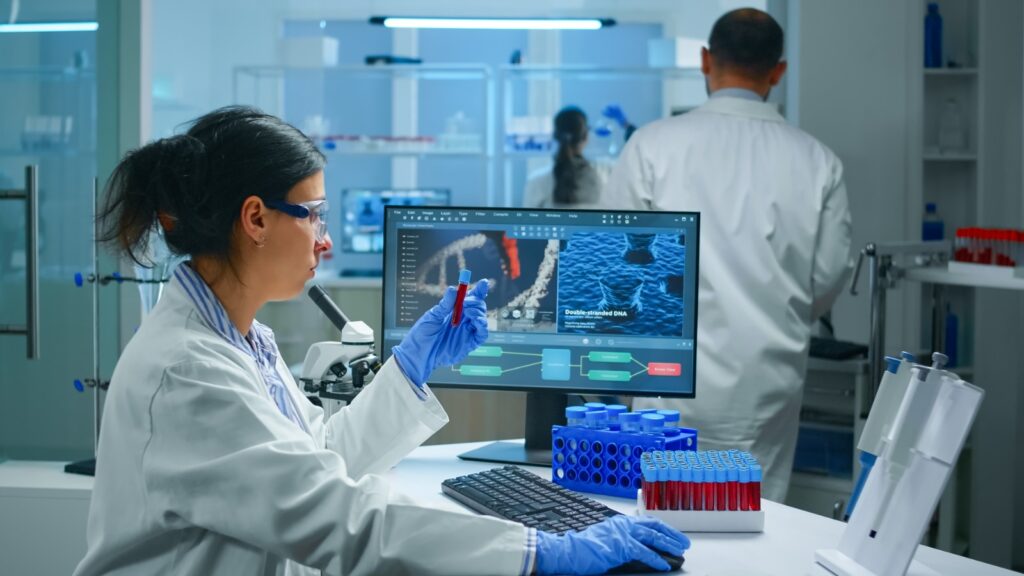X-rays have become an essential part of contemporary medicine because they enable doctors to see into patients’ bodies without causing any harm. Since its discovery by Wilhelm Roentgen in 1895, these electromagnetic waves with great energy have completely transformed diagnostic imaging. Although X-rays are most often linked with bone health assessments and fracture detection, they are vital in many other areas of medicine including diagnostics for various conditions and illness.
3 Types Of X-Rays
Now, we will explore the three main kinds of X-rays, each with its features and uses.
Plain Radiography, Often Known As Conventional Radiography:
The most common and well-known X-ray imaging is conventional radiography, sometimes called plain radiography. By subjecting a tiny area to a low dosage of ionizing radiation, this method may detect X-rays that have been delivered to a photosensitive film or digital detector. A two-dimensional picture is produced because various tissues absorb X-rays at different rates.
Traditional radiography has several benefits, one of which is its adaptability. Its ability to depict the chest, joints, and bones makes it a vital diagnostic tool for arthritic, fracture, and respiratory disorders. Plain radiography also helps doctors make rapid decisions because it doesn’t cost much and may provide pictures quickly.
Although traditional radiography is widely used, it does have certain drawbacks. Because of their comparable X-ray absorption rates, soft tissues like muscles and organs could be complex to discern during a CT scan. This reduces its usefulness in diagnosing diseases that primarily impact the body’s soft tissues. Digital and computed radiography are technological developments that have improved picture quality while decreasing radiation exposure.
Fluoroscopy:
One dynamic imaging method is fluoroscopy, which uses a digital detector or fluorescent screen to continually transmit X-rays onto an interior structure, allowing for real-time visualization. Fluoroscopy is an excellent alternative to traditional radiography to understand better how inside structures and organs work since it produces a live, moving picture.
A contrast agent may be injected into the body during a fluoroscopic operation to see specific organs or blood arteries better. Common uses for fluoroscopy include injections into joints, heart catheterization, and gastrointestinal tract examinations. Healthcare providers may diagnose gastrointestinal issues, heart irregularities, and joint difficulties more accurately when seeing a patient’s movement and function in real-time.
Although fluoroscopy is an effective diagnostic technique, there are concerns about radiation exposure that must be taken into account. Both patients and healthcare personnel may be exposed to an increased radiation dosage during lengthy procedures that include continuous X-ray exposure. Consequently, it is essential to follow safety measures and recommendations in the letter to reduce hazards.
Computerized Tomography Using X-Rays:
Computed Tomography, sometimes abbreviated as CT or CAT scan, is a huge step forward in X-ray imaging technology. CT scans provide cross-sectional pictures of the body using a computer and spinning X-ray equipment. Detailed, three-dimensional pictures are generated from the data acquired from various angles, offering a thorough perspective of the interior architecture.
CT scans have many medical applications because of their adaptability; for example, they may detect brain abnormalities, evaluate vascular architecture, and detect tumors. Because CT can see things with more granularity than regular radiography, it is a lifesaver when identifying various medical issues.
Compared to traditional radiography, CT scanning uses more radiation, yet it is an excellent diagnostic tool. Because of this, continuous attempts have been made to improve CT procedures to lower radiation exposure without lowering picture quality. Innovations like low-dose CT and iterative reconstruction methods have been developed to reduce radiation exposure without sacrificing diagnostic precision.
Conclusion
X-ray imaging is a broad category that includes several methods, each with a distinct function in the diagnostic medical area. While fluoroscopy offers real-time insights into organ function and movement, conventional radiography is still vital for checking bones and certain medical disorders. Computed Tomography is an invaluable diagnostic tool for various illnesses because it can generate intricate cross-sectional pictures.
The continuous advancement of X-ray technology keeps improving patient outcomes and diagnostic capacities. Future developments in medical imaging seem hopeful as scientists and healthcare providers work to achieve a balance between reducing radiation exposure and improving diagnostic effectiveness. Healthcare professionals like Dr vayas lab and patients may make educated judgments regarding diagnostic procedures and treatment plans when they know the subtle differences between these three kinds of X-rays.





